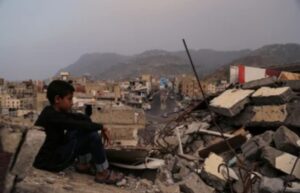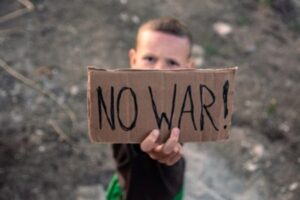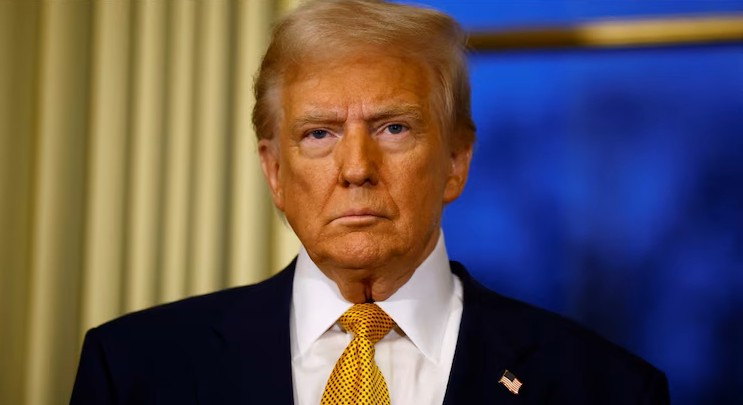The Silent Screams: How Wars Are Breaking Our World Apart in 2025
A mother’s tears, a child’s fear, and a world that seems to have forgotten how to heal
In a world where peace should be our greatest achievement, war has become our most devastating failure. As we stand in 2025, the numbers tell a story that breaks every human heart – but behind each statistic is a real person, a real family, a real dream destroyed.
When Numbers Have Names and Faces
Right now, as you read these words, 122.6 million people are forcibly displaced worldwide, including how to heal. But let’s stop for a moment. These are not just numbers on a page. Each number represents someone like you or me – someone who had a home, a job, children who laughed, parents who worried, dreams that seemed possible just yesterday.
Imagine waking up tomorrow morning and being told you have 10 minutes to pack everything that matters to you. What would you grab? Your family photos? Your child’s favorite toy? The wedding ring that means everything? Now imagine you can never go back home again. This is the reality for millions of people in our world today.
Ukraine: A Nation’s Heart Bleeding
In Ukraine, the war that started in 2022 has become a wound that won’t heal. Over 40,000 civilians have been killed or injured, while 3.7 million people are internally displaced, and 6.9 million have fled Ukraine entirely. Think about this – 6.9 million people. That’s more than the entire population of many countries, all forced to leave everything they knew and loved.
Over 12,600 civilian deaths have been recorded in Ukraine, and each death represents a universe of loss. A grandmother who will never again bake cookies for her grandchildren. A father who will never walk his daughter down the aisle. A child who will never grow up to become the doctor, teacher, or artist they dreamed of being.
The scale of suffering is almost impossible to comprehend. Nearly 1 million Russian soldiers have been killed or injured in the invasion, and Russia will likely hit the 1 million casualty mark in the summer of 2025. Behind each of these casualties is a Russian mother who will never see her son come home, a wife who waits by the window for someone who will never return.
Gaza: Where Hope Goes to Die
In the Gaza Strip and Palestine, another tragedy unfolds daily. Over 55,000 Palestinians and 1,700 Israelis have been killed in Israel’s invasion. These numbers represent families destroyed, children who will never learn to read, doctors who will never save another life, teachers who will never inspire another student.
When we talk about Gaza, we’re talking about one of the most densely populated places on Earth, where 2.3 million people live in an area smaller than many cities. Imagine your entire neighborhood being destroyed, your schools turned to rubble, your hospitals overwhelmed, and nowhere to run because the borders are closed.
Sudan: The Crisis the World Forgot
Perhaps the most heartbreaking of all current conflicts is happening in Sudan, where the world seems to have looked away. Sudan tops the list of humanitarian crises most likely to worsen in 2025, yet it receives little international attention compared to other conflicts.
Over 2.09 million Sudanese refugees are recorded in 2025, an 18% increase compared to last year, and more than double pre-war figures. Even more are internally displaced, with 8.6 million IDPs recorded. The suffering in Sudan is beyond imagination. In recent attacks on North Darfur, at least 89 civilians were killed in just 10 days, and heavy rains and flooding have affected nearly 600,000 people, displacing over 172,500 individuals.
Myanmar: Where Democracy Died
In Myanmar, the country ranks third in the list of humanitarian crises expected to worsen in 2025. Since the military coup in 2021, Myanmar has become a place where hope itself has been criminalized. People are fighting not just for their lives, but for the basic right to live in a free society.
The Ripple Effect: How War Touches Everyone
War doesn’t just affect the countries where bombs fall. It affects all of us. When millions of people are forced to flee their homes, neighboring countries must open their borders and share their resources. When global supply chains are disrupted, prices rise everywhere. When young people die in wars, we lose the scientists who might have cured cancer, the artists who might have created beauty, the leaders who might have built a better world.
2024 was described as “a year of turmoil in which new conflicts erupted, existing crises seethed, and climate-fueled disasters multiplied,” with nearly 123 million people forced to flee their homes by the end of June.
The Human Cost We Can’t Calculate
How do you put a price on a child’s laughter? How do you measure the value of a grandmother’s stories? How do you calculate the worth of a young person’s dreams? These are the things war destroys, and they can never be replaced.
Every day, drone attacks in 2025 have already outpaced 2024’s total by nearly 25 percent, killing over 100 people – more than twice the annual toll of the previous three years. Each drone strike represents not just the immediate victims, but the families left behind, the communities traumatized, the trust in humanity that dies a little more each day.
The Refugee Crisis: When Home Becomes Memory
By the end of April 2025, UNHCR estimates that the global number of forcibly displaced people has likely fallen slightly to 122.1 million – the first decrease in well over a decade. While this might seem like good news, it’s still 122.1 million human beings who cannot sleep in their own beds tonight.
What does it mean to be a refugee? It means carrying your entire life in a suitcase. It means your children asking when they can go home and not knowing what to say. It means doctors working as taxi drivers because their degrees aren’t recognized. It means grandparents dying in foreign lands, never seeing their homeland again.
The Children Who Pay the Highest Price
In every war, children suffer the most. They don’t understand why their toys are left behind, why Daddy isn’t coming home, why Mommy cries at night. Aid workers are near breaking point as 2024 was even worse than previous years in terms of the number of refugees and internally displaced people worldwide.
Children in war zones grow up too fast. They learn to recognize the sound of different weapons. They know which buildings are safe and which are not. They dream not of becoming astronauts or teachers, but simply of surviving another day. This is not childhood – this is survival.
When the World Looks Away
Perhaps the most tragic aspect of today’s conflicts is how quickly the world loses interest. Wars that dominated headlines last year are barely mentioned today. Suffering becomes routine. Horror becomes normal. We scroll past images of destruction like they’re advertisements for products we don’t want.
But each of these “forgotten” conflicts continues to destroy lives every single day. Families still flee in the middle of the night. Children still go to bed hungry. Parents still make impossible choices between safety and staying together.
The Economic Reality of War
Wars don’t just cost lives – they cost everything. The money spent on weapons could build schools. The resources used for destruction could feed the hungry. The young people who die in battles could have become the innovators and leaders our world desperately needs.
Every dollar spent on war is a dollar not spent on medicine, education, or building a better future. Every brilliant mind lost to conflict is a breakthrough that will never happen, a problem that will never be solved, a song that will never be written.
Hope in the Darkness
But even in the darkest times, human kindness shines through. Aid workers risk their lives to deliver food and medicine. Teachers continue to educate children in makeshift schools. Doctors operate by candlelight when the power goes out. Neighbors share their last piece of bread with strangers.
Refugees who have lost everything still sing lullabies to their children. Families separated by war still send messages of love across continents. Young people who have seen the worst of humanity still believe in the possibility of peace.
What This Means for All of Us
We live in an interconnected world. The child crying in a refugee camp today might have grown up to discover the cure for the disease that affects your family tomorrow. The artist whose hands were stilled by war might have created the beauty that would have brought joy to your life.
When we allow wars to continue, when we look away from suffering, when we accept that some people matter less than others, we diminish our own humanity. We become smaller, meaner, less capable of love and joy and hope.
The Choice We Face
As we move through 2025, we face a choice. We can continue to accept war as normal, suffering as inevitable, and human displacement as just another news story. Or we can decide that every single life matters, that peace is possible, and that we all have a role to play in building a better world.
This choice isn’t just for world leaders and politicians. It’s for all of us. Every time we choose compassion over indifference, every time we donate to help refugees, every time we refuse to see other people as enemies simply because they come from different places or believe different things, we are choosing peace over war.
The Real Numbers That Matter
Yes, the statistics are overwhelming. The top five humanitarian crises expected to worsen in 2025 are Sudan, occupied Palestinian territory, Myanmar, Syria and South Sudan. But the number that matters most is one – because if we can save one life, help one family, bring hope to one child, we have made the world better.
Every refugee who finds safety, every child who gets to go to school, every family that is reunited – these are victories against the forces of hatred and destruction. These are the numbers that give us hope.
Looking Forward: A World Worth Fighting For
The wars of 2025 seem overwhelming, the suffering endless, the problems too big for any one person to solve. But history teaches us that the most important changes often begin with ordinary people who simply refuse to accept that things have to stay the way they are.
Every great peace movement started with someone who said “enough.” Every refugee camp that becomes a thriving community begins with someone who sees potential instead of problems. Every child soldier who puts down a weapon and picks up a book represents hope winning over despair.
Our Shared Humanity
In the end, the most important thing to remember is that we are all connected. The tears shed in Ukraine are no different from tears shed anywhere else. The love of a Palestinian mother for her child is the same as the love of any mother anywhere. The dreams of young people in Sudan are the same dreams young people have everywhere – to live, to love, to build something beautiful with their lives.
War tries to convince us that we are different, that some lives matter more than others, that peace is impossible. But every act of kindness across religious or ethnic lines, every moment of compassion between supposed enemies, every hand extended in friendship instead of raised in anger proves that our common humanity is stronger than the forces that try to divide us.
The World We Could Build
Imagine a world where the resources currently spent on weapons were spent on schools. Where the brilliant minds currently focused on destruction were focused on creation. Where children grew up learning about different cultures instead of fearing them.
This isn’t naive optimism – it’s the only realistic hope we have. Because the alternative – a world where war is permanent, where suffering is acceptable, where we give up on the possibility of peace – is not a world worth leaving to our children.
A Call to Remember (The Silent Screams)
As you go about your day, remember the 122.1 million people who cannot go home tonight. Remember the mothers who tuck their children into beds in refugee camps, trying to make them feel safe when safety seems impossible. Remember the fathers who walk miles to find work so their families can eat. Remember the children who draw pictures of homes they may never see again.
Remember them not with pity, but with recognition – recognition that they are us, that we are them, that their dreams and hopes and fears are the same as ours. In remembering them, we remember our own humanity. And in remembering our own humanity, we take the first step toward building the world we all deserve – a world where war becomes history and peace becomes our greatest achievement.
The silent screams are real. The suffering is overwhelming. But so is our capacity for love, for hope, for building something better. The question is not whether we can end all wars tomorrow – the question is whether we will choose, today and every day, to be part of the solution instead of part of the problem.
The choice is ours. The time is now. The world is waiting.




Pingback: Trump Administration News & Policy Updates - August 2025